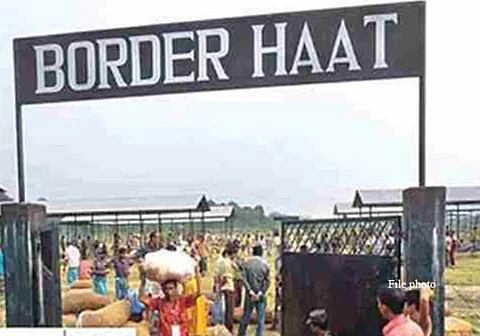
- Home
- Live Blog
- Breaking News
- Top Headlines
- Cities
- NE News
- Sentinel Media
- Sports
- Education
- Jobs

Agartala: Due to Bangladesh government's non-clearance of land on their side, the fate of two ‘border haats’ (market) approved by India and Bangladesh two years ago remains uncertain even as four similar border markets have proved to be success stories.
“Bangladesh government has not yet issued the required ‘no objection certificate’ (NOC) for the land use. This is proving to be a big hurdle in setting up two ‘border haats’ in northern Tripura. We have been pursuing this for two years now,” said Gitte Kiran Kumar Dinkarrao, Special Secretary at Tripura Industries and Commerce Department.
“Officials of India and Bangladesh, after visiting the proposed sites in June 2017, decided to set up two border haats along the international border in Unokoti and North Tripura districts. But nothing has happened since then,” Dinkarrao told IANS.
The first border haat was set up on July 23, 2011 at Kalaichar (India)-Kurigram (Bangaldesh) in the West Garo Hills of Meghalaya. Subsequently, three more haats followed at Balat (Meghalaya)-Dolora (Bangaldesh) in 2012, Srinagar (Tripura)- Chhagalnaiya (Bangaldesh) and Kamalasagar (Tripura)-Kasba (Bangaldesh) in 2015.
The Central government has been spending on an average Rs 3.5 crore to develop the infrastructure and necessary facilities for each border haat. Bangladesh government, however, is not providing any funds for the purpose.
Experts and various studies asserted that the border haats have not only increased the livelihood of the people living in the border areas, but has also tamed numerous cross-border troubles, including illegal trade.
Based on the success stories that have emerged from the four operational border haats, governments of both the countries decided to set up more border haats along the India-Bangladesh border. Consequently, six additional locations were sanctioned for establishment of the haats. In addition to the existing and the sanctioned haats, the Border Security Force, various state governments, MPs of the two countries and other stakeholders have proposed additional 73 locations for setting up of new border haats.
In 2016, CUTS International, a Jaipur-based international NGO, with support from World Bank, undertook a study to understand and examine the effect of border haats.
The study found that the border haats have directly impacted income generation for all the involved stakeholders. "They have created new work opportunities and have also contributed to border area development," said the study report available with IANS.
CUTS International Executive Director Bipul Chatterjee said that the 5 km radius bar for the visitors, buyers and vendors must be extended to larger areas.
“Women, unemployed youth and otherwise abled persons be given more scope to perform as vendor and vendees to increase their income. With the increase in income and economic positions of the bordering people, illegal trade, smuggling and cross-border crimes would be checked,” he said. (IANS)